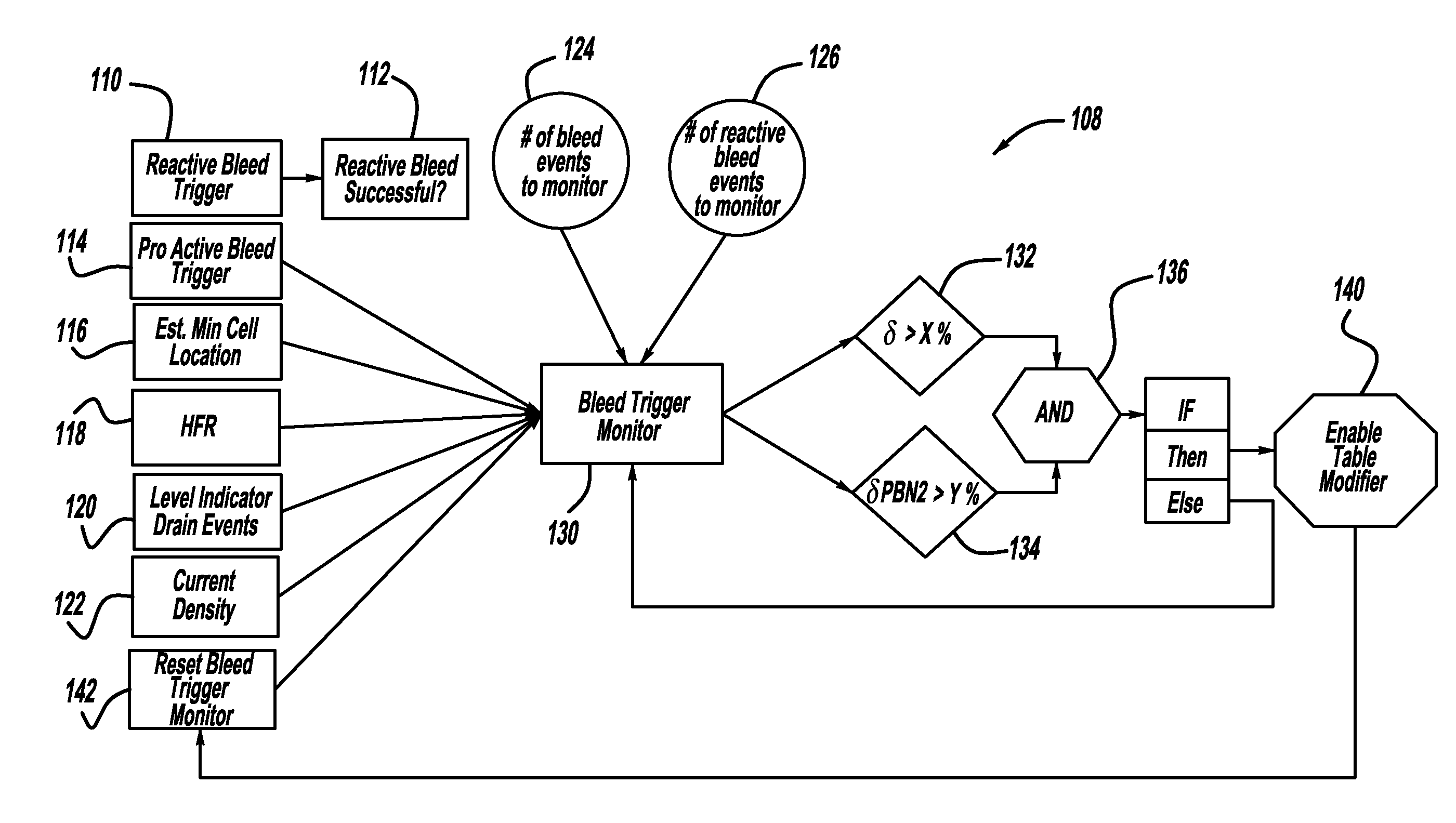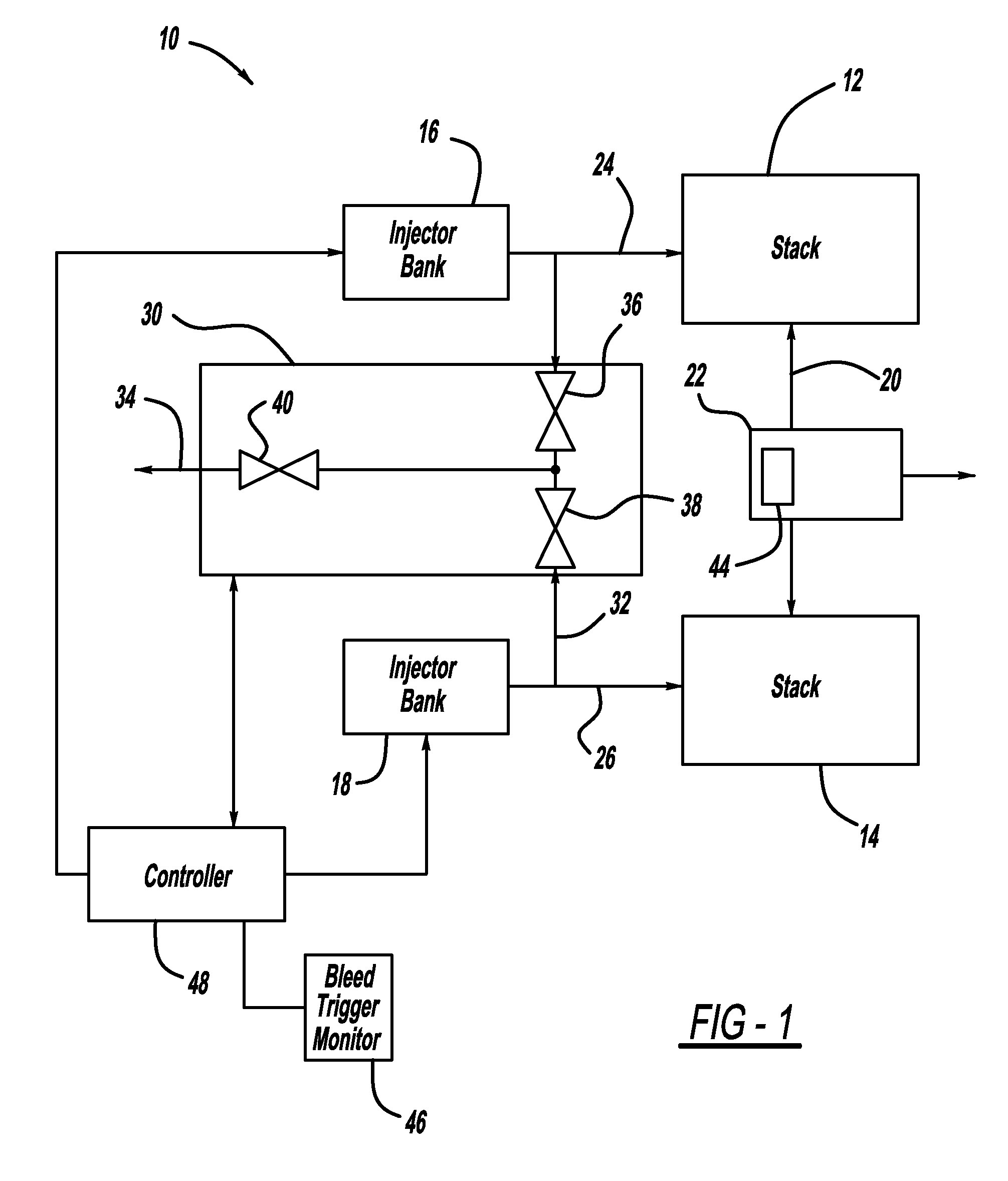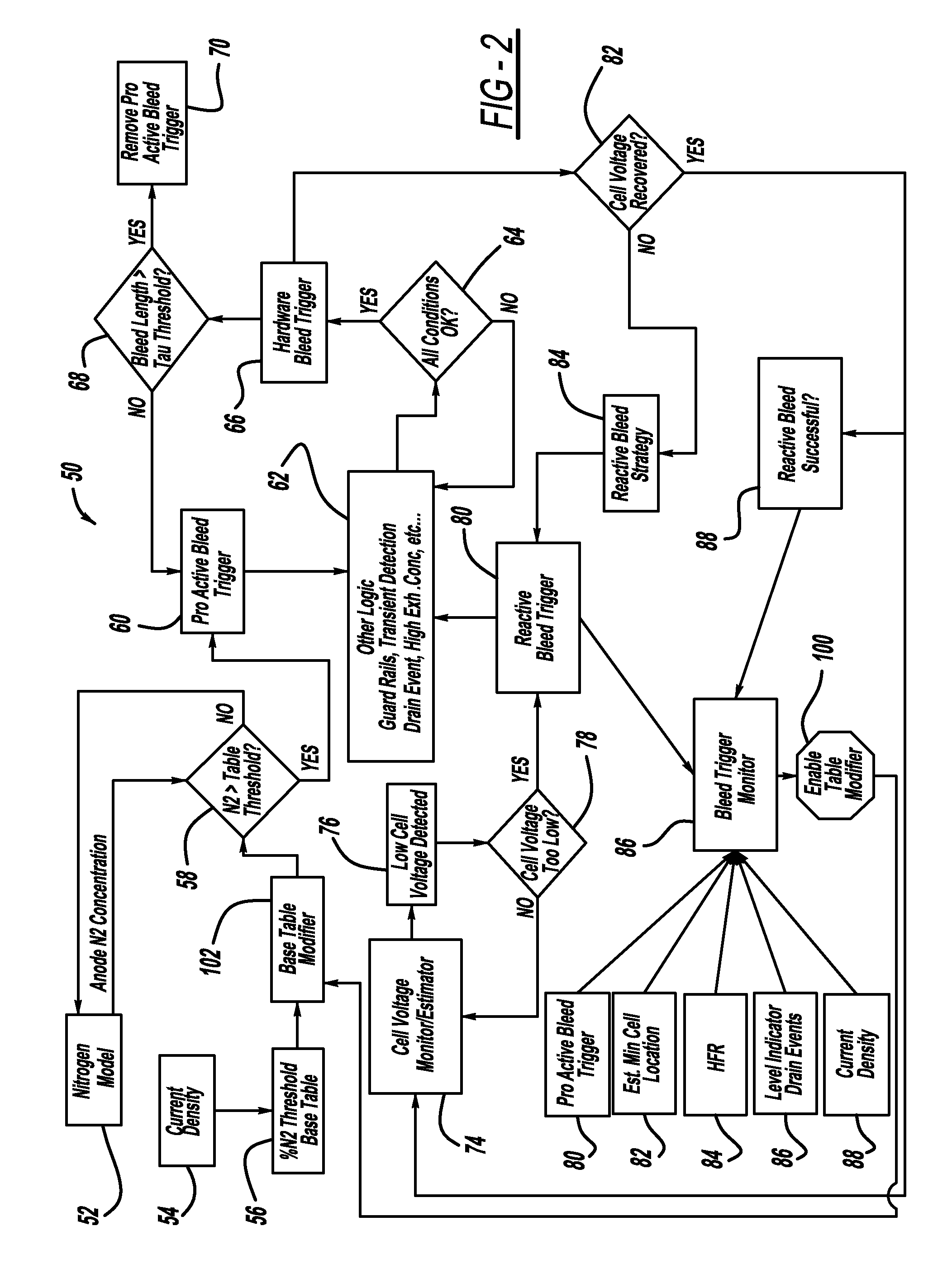Bleed trigger monitor used in fuel cell system
rigger monitor technology, applied in the field of system and method for monitoring the anode bleed process of a fuel cell system, can solve the problems of low cell voltage, unstable fuel cell stack, and relatively high manufacturing cost of materials
- Summary
- Abstract
- Description
- Claims
- Application Information
AI Technical Summary
Problems solved by technology
Method used
Image
Examples
Embodiment Construction
[0021]The following discussion of the embodiments of the invention directed to a system and method for monitoring the bleed events for bleeding the anode side of a fuel cell stack in a fuel cell system is merely exemplary in nature, and is in no way intended to limit the invention or its applications or uses.
[0022]FIG. 1 is a schematic block diagram of a fuel cell system 10 including split fuel cell sub-stacks 12 and 14 that operate under anode flow shifting. When the flow is in one direction, an injector bank 16 injects fresh hydrogen into the anode side of the sub-stack 12 on anode input line 24. Anode gas that is output from the sub-stack 12 is sent to the sub-stack 14 on connecting line 20. When the flow is in the opposite direction, an injector bank 18 injects fresh hydrogen into the anode side of the sub-stack 14 on anode input line 26 that is output from the sub-stack 14 and sent to the sub-stack 12 on the line 20. A drain valve 22 is provided in the line 20 and can be used f...
PUM
 Login to View More
Login to View More Abstract
Description
Claims
Application Information
 Login to View More
Login to View More - R&D
- Intellectual Property
- Life Sciences
- Materials
- Tech Scout
- Unparalleled Data Quality
- Higher Quality Content
- 60% Fewer Hallucinations
Browse by: Latest US Patents, China's latest patents, Technical Efficacy Thesaurus, Application Domain, Technology Topic, Popular Technical Reports.
© 2025 PatSnap. All rights reserved.Legal|Privacy policy|Modern Slavery Act Transparency Statement|Sitemap|About US| Contact US: help@patsnap.com



